May 29, 2025 | 11:52 GMT +7
May 29, 2025 | 11:52 GMT +7
Hotline: 0913.378.918
May 29, 2025 | 11:52 GMT +7
Hotline: 0913.378.918
According to the Department of Forestry, the world's furniture trade market is very large, about USD 405 billion/year, of which the demand for importing wood and wood products is about USD 230 billion. Currently, Vietnam's export turnover of wood and wood products only accounts for over 6% of global demand, so Vietnam's wood industry has many opportunities to expand and develop market share.
According to Mr. Do Xuan Lap, Chairman of the Vietnam Timber and Forest Products Association (VIFOREST), in export wood processing, raw materials account for 40–60% of the product cost structure. In the 2017–2021 period, the demand for raw wood for Vietnam's wooden furniture processing industry increased by 34–41 million m3/year. Domestically exploited wood materials account for about 77.4% of the supply source. On average, each year, Vietnam has to import 5–6 million m3 of round wood to serve production. Reality shows that Vietnam's wood processing industry depends heavily on the source of imported raw wood.

Vietnam's wood industry mainly uses certified planted forest timber to be proactive about the source of clean raw materials. Photo: V.D.T.
Mr. Ngo Si Hoai, Vice Chairman of VIFOREST, added: Vietnam's wood industry now has over 5,000 wood processing enterprises exporting to 140 countries and territories around the world. Since 2016, Vietnam has banned logging in natural forests. Since then, the main source of raw materials for Vietnam's wood industry has mainly relied on planted forests, of which 70–80% are acacia trees. Each year, Vietnam's acacia forests provide over 30 million m3 of raw wood for the wood industry, including wood chips, pellets, and interior and exterior wood products. In addition, Vietnam also has approximately 1 million hectares of rubber, mostly smallholder rubber, providing an additional 3–4 million m3 of wood per year for the wood processing industry.
"In 2023, Vietnam imported just over USD 2.1 billion worth of raw wood, down 28.3% compared to 2022. Of which, 750,000 m3 of wood is from tropical countries, mainly Africa. However, this source of wood is at a very high risk, so Vietnam has two filters, a filter by species that depends on the level of risk and a filter by positive or negative geographical region, in order to ensure that the source of imported wood is of legal origin, especially when Vietnam is preparing to implement the EU's EUDR regulation," said Mr. Ngo Si Hoai.

In export wood processing, raw materials account for 40–60% of the product cost structure. Photo: V.D.T.
According to Mr. Ngo Si Hoai, by the end of 2024, large-scale wood processing enterprises in Vietnam will have to enforce the EUDR regulation when exporting goods to the EU market, while small businesses will be given a grace period until mid-2025.
Vietnam has more than 1 million farmer households participating in the supply chain of raw wood from planted forests. Therefore, the functional sector is very worried about how farmer households with small-scale planted forests, around 1 hectare, can explain and provide geographical information so that wood products processed from this source of raw wood can enter the EU market.
“Vietnam has many farmer households that only own 1-2 hectares of planted forests; many households that intercrop acacia trees on integrated farms; or households that provide small-scale exploitation and transportation of planted forest timber to provide raw materials for export wood processing enterprises. We hope that Vietnam and the EU will have negotiations to issue favorable regulations so that farmers can implement EUDR," shared Mr. Ngo Si Hoai.
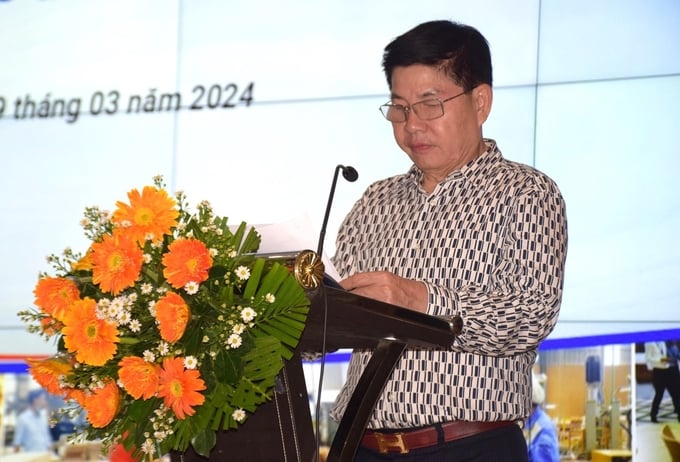
According to Mr. Do Xuan Lap, reality shows that Vietnam's wood processing industry depends heavily on the source of imported raw wood. Photo: V.D.T.
According to Mr. Hoai, in recent years, Vietnam's wood and forest products industry has welcomed many delegations from Malaysia, Indonesia, Thailand, and Myanmar. They all evaluated that Vietnam's forestry sector and wood industry have achieved a lot of success, especially the transition from dependence on natural forests to dependence on planted forests in a short time.
"Vietnamese farmers have been motivated to plant forests thanks to the effective reform of forestry land use rights, such as Contract 10 in agriculture. Forestry land previously managed and used by forestry plantations was assigned to farmers to plant forests, so as of now, Vietnam has 3–4 million hectares of planted forests," said Mr. Ngo Si Hoai, Vice Chairman of VIFOREST.
In later times, planted forest timber, especially acacia wood, has affirmed its important role in Vietnam's wood industry. Since the 1990s (20th century), Vietnam has had the first wood chip processing factory, meaning forest planting farmers have an address to consume wood from planted forests. After that, Vietnam exported lumber and interior and exterior wooden furniture. Up to now, Vietnam has 4-5 product groups that allow the wood processing industry to effectively use the entire wood biomass of planted forests.
"The domestic source of wood materials is currently harvested from over 3.93 million hectares of planted production forests, which can provide over 30 million m3 of wood per year for processing and exporting wood products," said the Vice Chairman of VIFOREST.

Planted forest timber, especially acacia wood, has affirmed its important role in Vietnam's wood industry. Photo: V.D.T.
According to Mr. Nguyen Trung Kien, representative of the Sustainable Forest Management and Biodiversity Conservation Project funded by the United States Agency for International Development, in recent years, Vietnam has had many activities to promote reducing greenhouse gas emissions and enhancing the ability to absorb carbon from production forests. The project aims to improve community forest management, promote livelihood development for people next to forests, strengthen law enforcement, improve production forest planting techniques, and mobilize resources for forest management and protection.
"In particular, developing the acacia value chain is an important and influential task that the project has implemented. The project has implemented a series of promotion activities, especially improving acacia seedlings to provide for afforestation activities; providing technical support for care and thinning in production forest planting; and supporting enterprises towards sustainable forest management certification," said Mr. Nguyen Trung Kien.
Translated by Thu Huyen
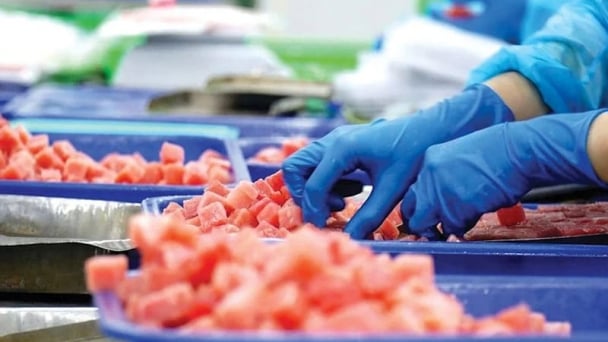
(VAN) The import-export turnover between Vietnam and Singapore rose amid a trade rebound, with machinery, electrical equipment, and fuels making up the majority of the transaction value.
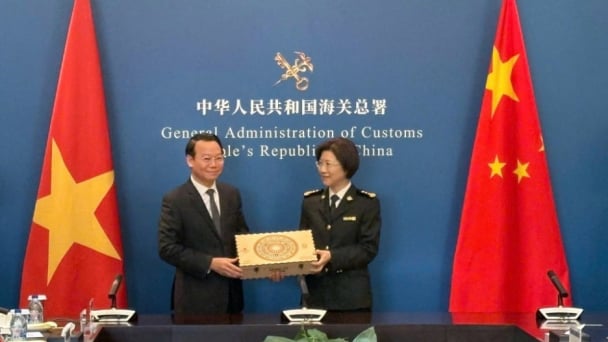
(VAN) Director General of the General Administration of Customs of China, Ms. Sun Mai Jun, has pledged to implement measures that will ease the import process for Vietnamese agricultural products.

(VAN) Although Vietnam is still increasing its coffee exports, the industry is currently in the process of determining market strategies in response to the U.S. imposition of reciprocal tariffs.

(VAN) With rising demand in Muslim-majority countries, Halal certification is becoming a critical passport for Vietnamese agricultural products seeking sustainable market access and consumer trust in the Middle East and Africa.

(VAN) Vietnam’s fruit and vegetable exports to the U.S. are rising sharply, and exporters are hoping that any upcoming reciprocal tariffs will be set at manageable levels.
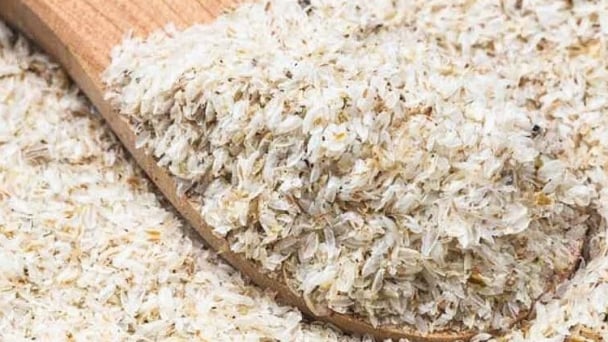
(VAN) Despite meeting quality standards, Vietnamese rice bran exporters still face difficulties with administrative procedures under the new protocol.
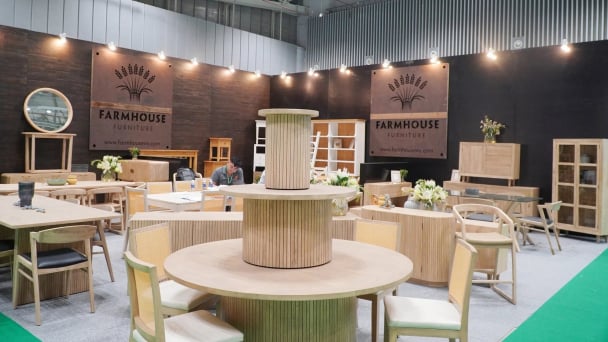
(VAN) The U.S. is tightening import tariffs and origin inspections, requiring Vietnamese businesses to proactively prepare in terms of legal compliance, supply chains, and appropriate export strategies.